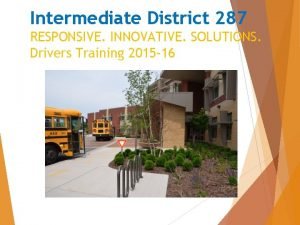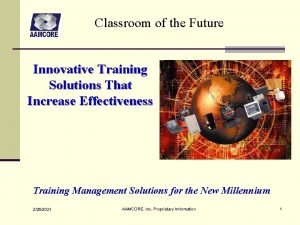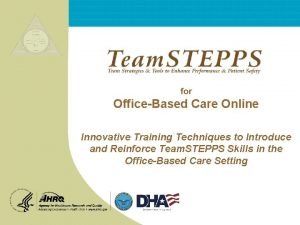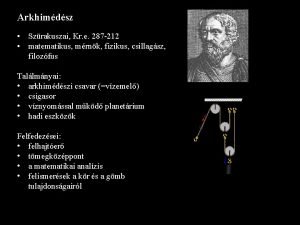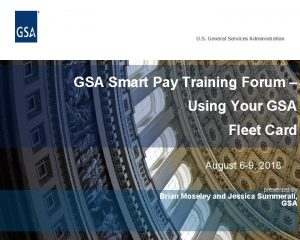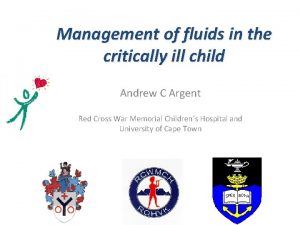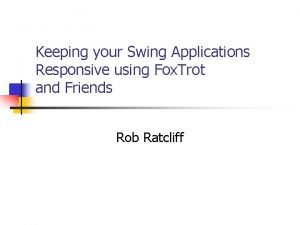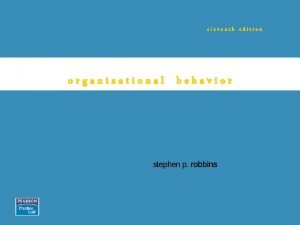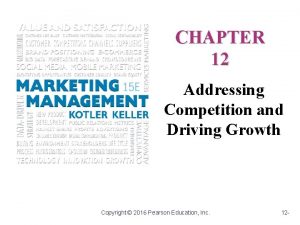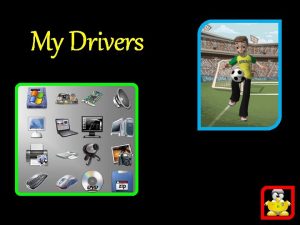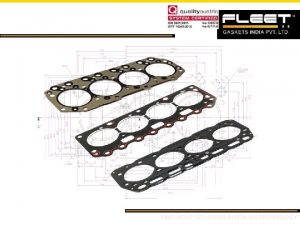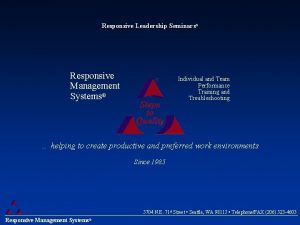Intermediate District 287 RESPONSIVE INNOVATIVE SOLUTIONS Drivers Training






































- Slides: 38

Intermediate District 287 RESPONSIVE. INNOVATIVE. SOLUTIONS. Drivers Training 2015 -16

Who do you call for transportation? Amy Tiedens- Tuesday and Friday Transportation Coordinator W: 763 -550 -7132, C: 763 -232 -6387 Nextels: 104*1283*456 Maureen Johnson- Monday, Wednesday and Thursday W: 763 -550 -7110, C: 952 -994 -1813 Nextel: 612 -267 -3302

Where to find transportation information? 287 Staff Web Page Go to Transportation (Bottom left)

What will you find on the Transportation Page? Request for Transportation Form Procedures for requesting transportation § Vehicle accident procedures and form § Vehicle transportation report § Student incident report in vans or contract bus §


Blue Transportation Report (Trip Information) Form should always be printed on blue paper. Every time staff drives a van, even if you are not transporting students, you must always record the miles and trip destination on the blue sheet. Use trip codes, for example: A student missed his/her scheduled route to work, use trip reason, M. We would like to be accountable for van miles. Always record destination location.


Good Defensive Drivers use SIPDE And THE SMITH SYSTEM • Get the big picture- Look 20 sec. ahead • Leave • Aim yourself an out- Don’t get boxed in high in steering- Two hands on wheel • Make sure others see you-Check Blind Spots • Search- 20 -30 seconds ahead • Identify- Potential objects, cars, pedestrians • Predict- What are other road users doing? • Decide-What to do? Change lanes or Stop! • Execute-Stop, slow down to avoid a crash!

SMITH SYSTEM OF DEFENSIVE DRIVING

GET THE BIG PICTURE

AIM HIGH – SEE LOW If you aim high, you can still see low. This is due to the design of your vision.

LOOK 12 – 15 SECONDS AHEAD

LEAVE YOURSELF AN OUT YOU SHOULD ALWAYS LEAVE SPACE AROUND YOUR VEHICLE BE AN ANTISOCIAL DRIVER KEEP MOVING AND YOU ARE LESS OF A TARGET

MAKE SURE THEY SEE YOU

KEY FIVE: MAKE SURE THEY SEE YOU • “Your Big Picture” includes people who may not be aware of your presence, even though they should. • To get their attention, you need to get eye contact. ” • There are various ways to seek eye contact with other drivers and pedestrians. • Use your warning devices appropriately: o Lights, Horn, hand signal, wave, o Brake lights, turn signals. • Avoid driving in the blind areas of other drivers. • Look behind you when stopping or slowing. • Check your mirrors.

Backing: Avoid whenever possible!

Defensive Driving: Is this 3 -4 seconds following distance?

What does “Merge” mean?

The Zipper merge

Motor Vehicle Crashes § No. 1 cause of death for 3 - to 34 -year -olds § An estimated 39, 000 to 46, 000 people killed in crashes every year § The National Safety Council reported in 2011 that the three biggest causes of fatalities on the road include: 1. Alcohol (30. 8%) 2. Speeding (30%) 3. Distracted driving (26%) Distractions now join alcohol and speeding as leading factors in fatal and serious injury crashes.

How Cell Phones Distract Visual – Eyes off road Mechanical – Hands off wheel Cognitive – Mind off driving CHALLENGE: Drivers don’t understand or realize that talking on a cell phone distracts the brain and takes focus away from the primary task of driving.

Millions of People are Texting While Driving 18% of drivers admit to texting while driving: 4% of Boomers 15% of Gen X 39% of Gen Y 36% of Teen Drivers

The Problem National Safety Council estimates that 1 in 4 car crashes involves cell phone use Hands-free seen as solution and mistakenly believed to be safer than handheld People recognize the risk of talking on handheld and texting more than the risk of hands-free Most legislation focuses on only handheld devices or texting All state laws and some employer policies allow hands-free devices (Law -Type III Van Drivers can’t use handsfree devices in Minnesota) Hands-free devices offer no safety benefit when driving.

Millions of People are Talking While Driving 11% of drivers at any point during the day are on cell phones 81% of drivers admit to talking on cell phone while driving: 74% of Boomers 88% of Gen X 89% of Gen Y 62% of Teen Drivers

Multitasking: The human brain handles tasks sequentially

Our Brains and Multitasking

Inattention Blindness A narrowed scope Where drivers not using a hands-free cell phone looked. Where drivers using a hands-free cell phone looked. Source: Transport Canada

Important reasons why not to text and drive

Important District 287 Policies to Remember • • State Law- Driver and all passengers must wear seat belts! Head lights must be on at all times. The driver shall not fuel the vehicle with students on board. The driver shall not transport parents or other adults outside of 287. Drivers must follow state laws and district policies. No food or drink in 287 vans. You are very visible in 287 school vans and you represent District 287.

Medication Affects § Subtle changes in a driver’s perception can be extremely dangerous. Slight drowsiness, dizziness, or visual impairment may go unnoticed, and drivers may believe that they are able to drive when they should not. § Over-the-Counter Medications § If taking common over-the-counter medications, such as pain relievers and nasal decongestants: § Read all warnings. § Consult a pharmacist with any questions. § If trying a new medication, take it at a time when you will not need to drive. § Prescription Medications § Prescription medications usually have stronger side effects. Before you start driving or using other heavy machinery, assure that your medication has no side effects. Ask your pharmacist or medical provider if it is safe for you to drive while taking the prescribed medications, and take your first dose at a time when you will not need to drive.

Don’t forget! State Law: You must have phone numbers of student’s parents in the van in case of an emergency § Don’t leave information in the van overnight § Follow District 287 procedures regarding confidentiality §

Discuss plan with parents and teachers Ask parents and teachers if you are able to discuss evacuation plan with student ● Remember, Talking about the plan could cause stress and anxiety for some students ●

Know the students! What needs and abilities do they have? Physical concerns? Can student get to exit independently? ● Does the student need assistance or supervision? ● ●

It Begins with Prevention § § § Preventing vehicle issues is a team effort. The more drivers and mechanics communicate, the less mechanical surprises you will have throughout the school year. Preform an effective Pre-trip inspection. Hear, smell and feel trouble “starting”. Never just assume you can “wait” to point out trouble. Report any issues or questions with the vans to the Transportation Coordinator.

Requirements Check that a pre-trip has been completed for the day, if not you need to complete the pre-trip before driving the van. Moving Violations MUST be reported Personal cell phone use is prohibited The driver shall not use a Nextel while Vehicle is in motion.

Emergency Equipment *First Aid Kit *Bodily Fluid Cleanup Kit *Emergency triangles *Fire Extinguisher *Seat Belt cutter(s) *Window Punch

How to escape a sinking car

Remember you have important people on board There are laws, there are district policies and there are best practices. Drive safe and remember the students and staff you are transporting are depending on you to make good decisions!
 Intermediate district 287
Intermediate district 287 Innovative training solutions
Innovative training solutions Innovative business solutions
Innovative business solutions Innovative analytical solutions
Innovative analytical solutions Double splice tape
Double splice tape Aarambh revolution pvt ltd
Aarambh revolution pvt ltd Innovative training techniques
Innovative training techniques Pantone 659
Pantone 659 L. 287/1990
L. 287/1990 Kj 287 b
Kj 287 b Archimedes ( arşimet) (mö 287–212 )
Archimedes ( arşimet) (mö 287–212 ) 212 bc
212 bc (1642-1727)
(1642-1727) Archimedes z syrakuz
Archimedes z syrakuz Legge 287/90 spiegazione
Legge 287/90 spiegazione Kieso intermediate accounting chapter 21 solutions
Kieso intermediate accounting chapter 21 solutions Chapter 17 intermediate accounting
Chapter 17 intermediate accounting Driving at work toolbox talk
Driving at work toolbox talk Fmvrs login
Fmvrs login Plissit model
Plissit model Fluid responsive shock
Fluid responsive shock Java swing responsive gui
Java swing responsive gui What is gender responsive pedagogy
What is gender responsive pedagogy Customer responsive culture
Customer responsive culture Interactive speaking assessment
Interactive speaking assessment Culturally responsive vs culturally relevant
Culturally responsive vs culturally relevant Https //forms.office.com
Https //forms.office.com Birkbeck university of london
Birkbeck university of london What is imitative speaking
What is imitative speaking Responsive prayer of thanksgiving
Responsive prayer of thanksgiving Responsive uis
Responsive uis Vdoe culturally responsive teaching
Vdoe culturally responsive teaching Jaringan supply chain
Jaringan supply chain Culturally responsive teaching and the brain book study
Culturally responsive teaching and the brain book study Christmas responsive reading
Christmas responsive reading Chapter 12 addressing competition and driving growth
Chapter 12 addressing competition and driving growth Responsive design final assessment
Responsive design final assessment Customer responsive culture
Customer responsive culture Culturally responsive teaching in music education
Culturally responsive teaching in music education
